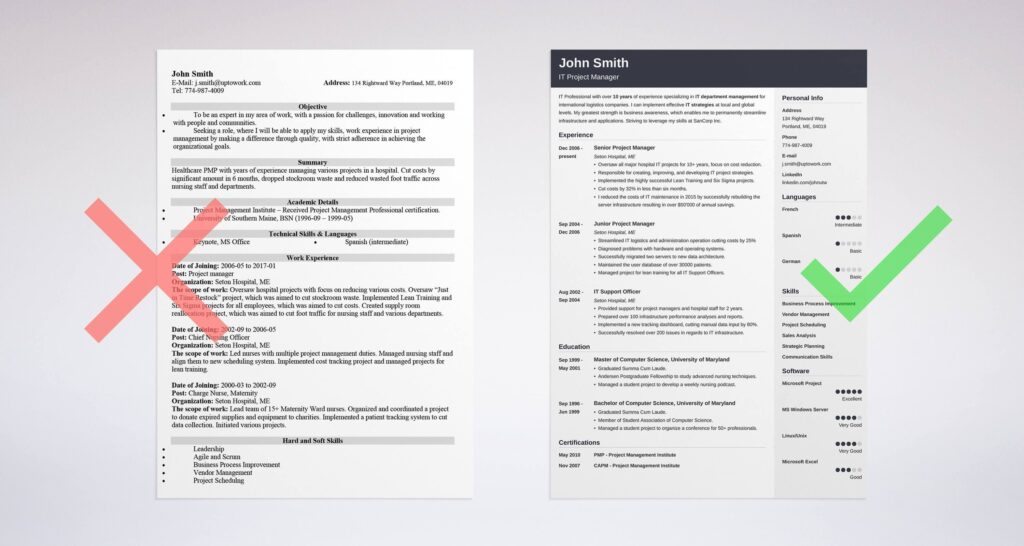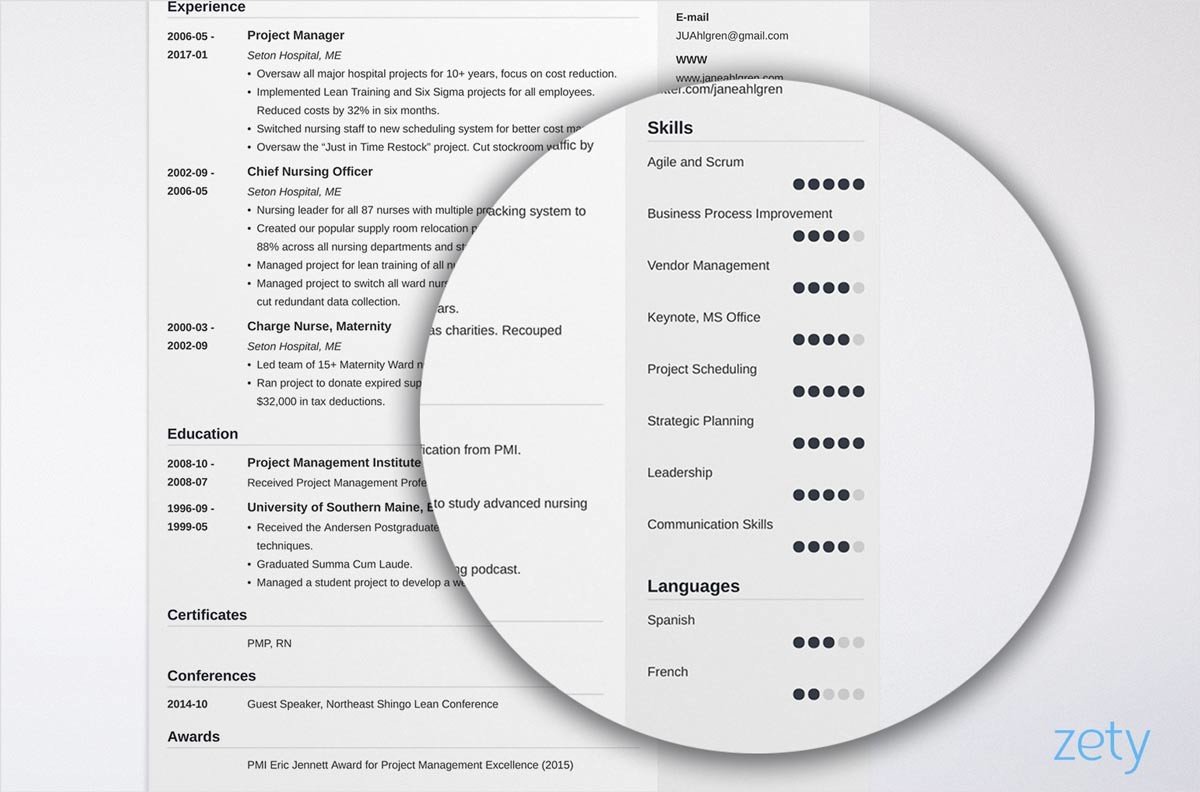how to build the best resume | Download CV Format 2023
how to build the best resume.Your CV is the tool that helps you get your foot in the door when applying for jobs. Find out how to write a good CV and get tips and advice on what to include in your own personal marketing document
Table of Contents
What is a CV?
CV stands for Curriculum Vitae. It is a document that provides an overview of a person’s education, work experience, skills, and achievements.
A CV is typically used when applying for academic, scientific, research, or medical positions or when applying for grants or fellowships. How to build the best resume.A CV typically includes personal details, such as name and contact information, education, work experience, and a list of relevant skills and achievements.
It may also include other information, such as awards, publications, research experience, and professional memberships.
A CV should be tailored to the specific job or opportunity that you are applying for and should highlight your relevant experience and skills. It should also be well-organized and easy to read, typically not exceeding two pages in length.

How long should a CV be?
The length of a CV can vary depending on the individual’s experience, skills, and the job they are applying for. However, in general, a CV should be concise and not exceed two pages in length.how to build the best resume
For someone with limited work experience or just starting out in their career, a one-page CV may be sufficient. For someone with more experience and skills, a two-page CV may be necessary to fully showcase their qualifications.
It’s important to remember that the purpose of a CV is to provide a brief overview of your skills, education, and experience. It’s not necessary to include every detail of your work history or every skill you possess. Instead,
Focus on the most relevant information and highlight your achievements that demonstrate your suitability for the position you are applying for.how to build the best resume
What to include in a CV
- Contact details – Include your full name, home address, mobile number and email address. Your date of birth is irrelevant and unless you’re applying for an acting or modeling job you don’t need to include a photograph.
- Profile – A CV profile is a concise statement that highlights your key attributes and helps you stand out from the crowd. Usually placed at the beginning of a CV it picks out a few relevant achievements and skills while expressing your career aims.A good CV profile focuses on the sector you’re applying to, as your cover letter will be job-specific. Keep CV personal statements short and snappy – 100 words is the perfect length. Discover how to write a personal statement for your CV.
- Education – List and date all previous education, including professional qualifications. Place the most recent first. Include qualification type/grades, and the dates. Mention specific modules only where relevant.
- Work experience – List your work experience in reverse date order, making sure that anything you mention is relevant to the job you’re applying for. Include your job title, the name of the company, how long you were with the organization, and key responsibilities.
- If you have plenty of relevant work experience, this section should come before education.
- Skills and achievements – This is where you talk about the foreign languages you speak and the IT packages you can competently use. The key skills that you list should be relevant to the job.
- Don’t exaggerate your abilities, as you’ll need to back up your claims at the interview. If you’ve got lots of job-specific skills you should do a skills-based CV.
- Interests – ‘Socialising’, ‘going to the cinema’, and ‘reading’ isn’t going to catch a recruiter’s attention. However, relevant interests can provide a more complete picture of who you are, as well as give you something to talk about at the interview.
- Examples include writing your own blog or community newsletters if you want to be a journalist, being part of a drama group if you’re looking to get into sales, and involvement in climate change activism if you’d like an environmental job.
- If you don’t have any relevant hobbies or interests leave this section out.
- References – You don’t need to provide the names of referees at this stage. You can say ‘References available upon request but most employers would assume this to be the case so if you’re stuck for space you can leave this out. How to build the best resume
For more help and advice on how to write a CV and to find CV templates, see example CVs.

CV format: how to build the best resume
- Avoid titling the document ‘curriculum vitae’ or ‘CV‘. It’s a waste of space. Instead, let your name serve as the title.
- Section headings are a good way to break up your CV. Ensure they stand out by making them larger (font size 14 or 16) and bold.
- Avoid fonts such as Comic Sans. Choose something professional, clear, and easy to read such as Arial, Calibri, or Times New Roman. Use a font size between 10 and 12 to make sure that potential employers can read your CV. Ensure all fonts and font sizes are consistent throughout.
- List everything in reverse chronological order. Then the recruiter sees your work history and most recent achievements first.
- Keep it concise by using clear spacing and bullet points. This type of CV layout allows potential employers to skim your CV and quickly pick out important information first.
- Name the document when saving – Don’t just save as ‘Document 1’. Make sure the title of the document is professional and identifies you, such as ‘Joe-Smith-CV’.
- Unless the job advert states differently (for example, it may ask you to provide your CV and cover letter as a Word document) save it with a . PDF file extension to make sure it can be opened and read on any machine.
- If you’re posting your CV, print it on white A4 paper – Only print on one side, and don’t fold your CV – you don’t want it to arrive creased.
How to write a good CV
- Tailor your CV to the job: Customize your CV for the job you are applying for, highlighting the skills, experience, and qualifications that are most relevant to the position.
- Keep it concise: Your CV should be clear and easy to read, with no more than two pages in length.
- Use a professional format: Use a clear and professional font and formatting style, with headings and bullet points to organize the information.
- Use strong action verbs: Start each bullet point with a strong action verb, such as “developed,” “implemented,” or “managed.”
- Highlight achievements: Highlight your achievements and accomplishments, rather than just listing your responsibilities. Use numbers and specific examples to demonstrate your impact.
- Include keywords: Use keywords from the job description to demonstrate that you have the skills and experience the employer is looking for.
- Be honest: Be truthful about your skills, experience, and qualifications. Don’t exaggerate or misrepresent your accomplishments.
- Get feedback: Have someone else review your CV for errors or inconsistencies, and ask for feedback on how to improve it.
Remember, your CV is your chance to make a strong first impression on a potential employer. Take the time to craft a well-written and professional document that showcases your skills, experience, and qualifications.

What is the best CV format?
The best CV format may vary depending on your industry, experience, and the job you are applying for. However, here are some common CV formats to consider:
- Chronological: This format lists your work experience in reverse chronological order, starting with your most recent job. This is a common format that emphasizes your career progression and demonstrates your most recent experience.
- Functional: This format focuses on your skills and experience rather than your work history. It is a good option if you have gaps in your employment or if you are changing careers.
- Combination: This format combines elements of both the chronological and functional formats, highlighting both your work experience and skills.
Regardless of the format you choose, be sure to use a clear and professional font, consistent formatting, and clear headings and bullet points to organize the information.
Remember to tailor your CV to the job you are applying for and highlight the qualifications and experience that are most relevant to the position.
How to fill the gap left by the COVID-19 pandemic
The COVID-19 pandemic has disrupted many industries and job markets, causing employment gaps for many people. Here are some tips on how to fill the gap left by the pandemic on your CV:how to build the best resume
- Be honest: If you have experienced a job loss or gap in employment due to the pandemic, it’s important to be honest about it on your CV. You can mention the impact of the pandemic on your previous employment or describe how you spent your time during the gap.
- Highlight new skills: Use the time during the pandemic to develop new skills or expand your existing ones. This could include taking online courses, volunteering, or working on personal projects. Highlight these new skills on your CV to demonstrate your continued growth and development.
- Focus on transferable skills: Even if you were not working during the pandemic, you may have developed transferable skills such as adaptability, problem-solving, and communication. These skills are valuable in any job and can be highlighted on your CV.
- Volunteer: Volunteering during the pandemic shows that you were proactive and used your time productively. It can also demonstrate your commitment to making a positive impact in your community.
- Network: Use your professional network to find new opportunities and stay connected in your industry. Attend virtual events and connect with others on LinkedIn to stay up-to-date on job openings and trends in your field.how to build the best resume
Remember, the pandemic has affected many people, and employers are likely to be understanding of employment gaps during this time.
Be honest and proactive in addressing the gap on your CV, and focus on demonstrating your skills, experience, and continued growth.how to build the best resume
Conclusion
“Thank you for your time. I look forward to speaking with you about my experience and passion for all aspects of web development. You can reach me at [phone number and email].” “I would love the chance to further discuss the position and what skills I’d bring to the job.
cv examples
how to write cv for job
cv format
how to write cv for students
example of a good cv
how to write a cv pdfhow to write best cv
how to write best cv examples
how to write best cv pdf
how to write best cv for internship
how to write best cv format
how to write the best cv UKhow to build the best resume
how to write the best cv and cover letter
how to write the best cv 2021
how to write good cv examples
how do you write a good cv example
what should i write in my cv profile example
how should a cv be written
how do i write a good cv for a job
how to build the best resume
how to build the best resume
how to build the best resume
how to build the best resume
how to build the best resume
how to build the best resume








